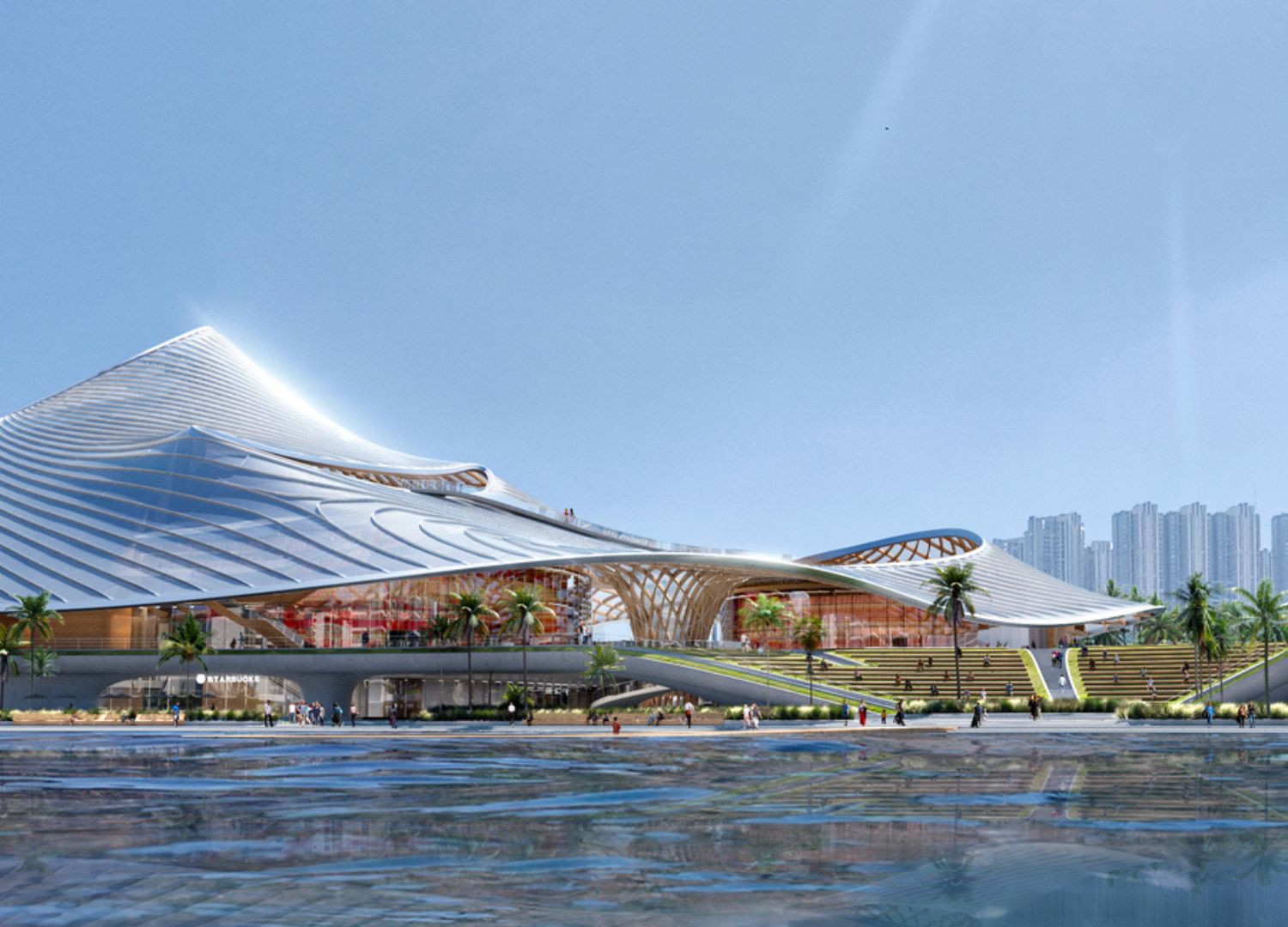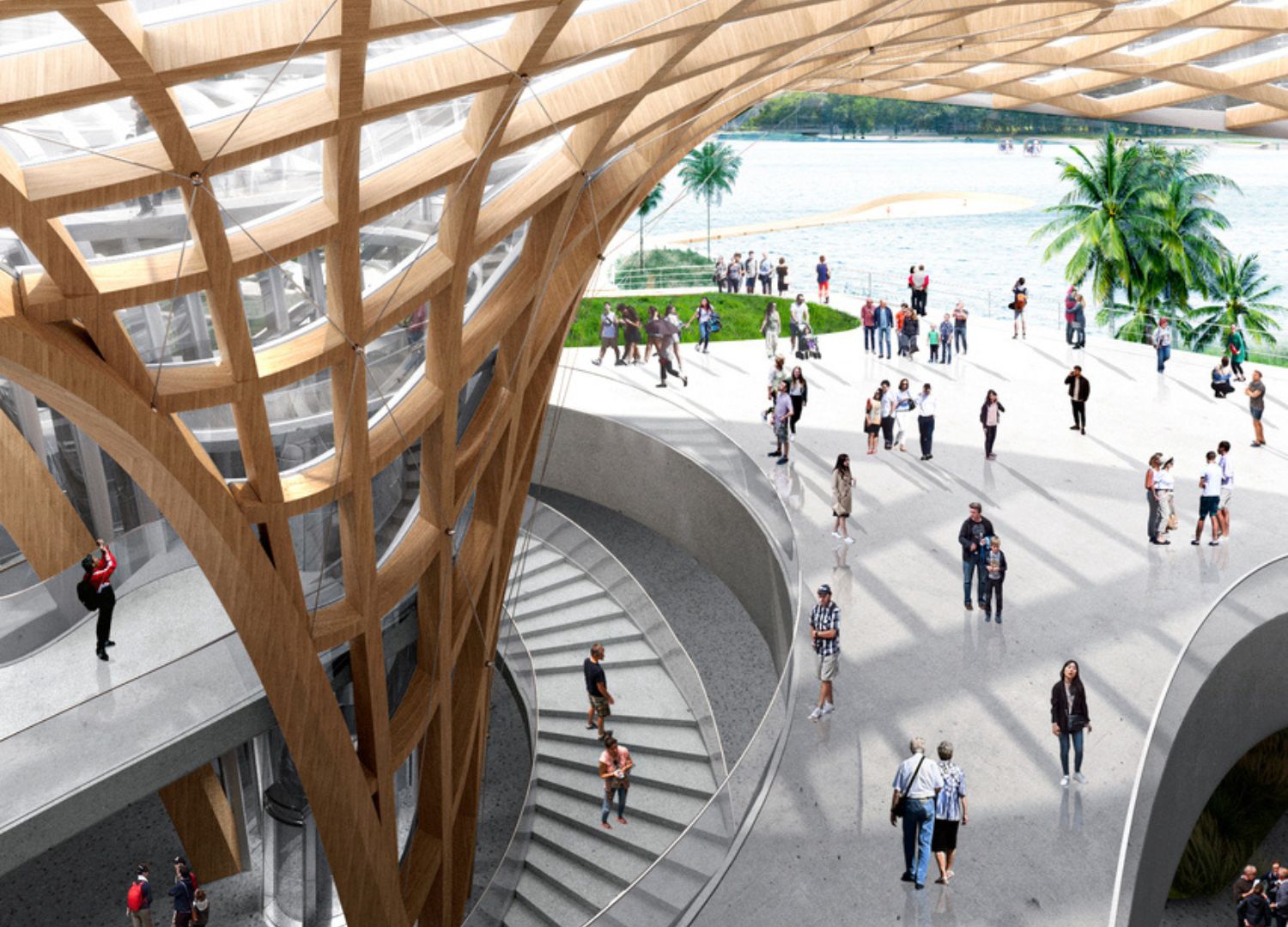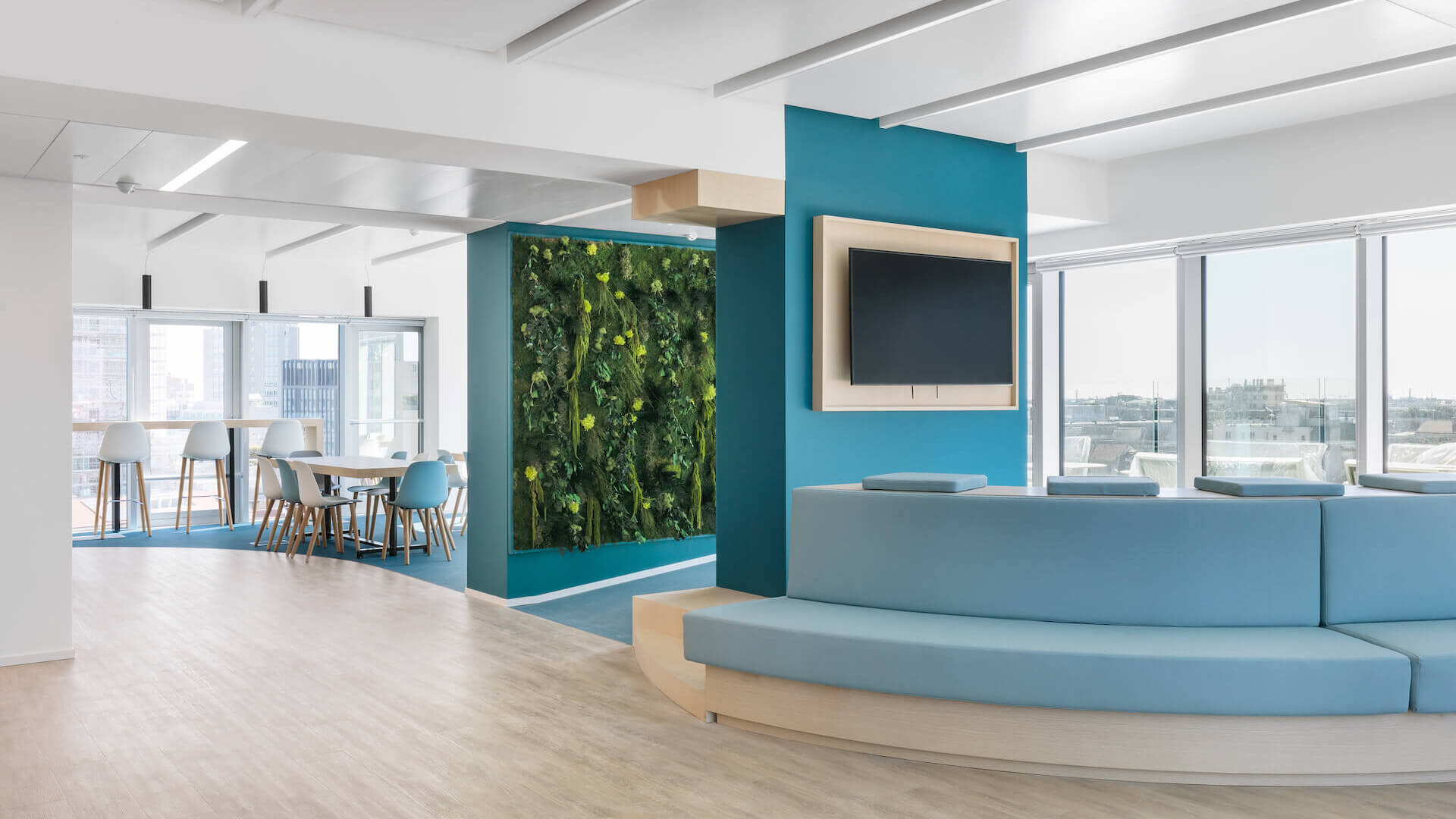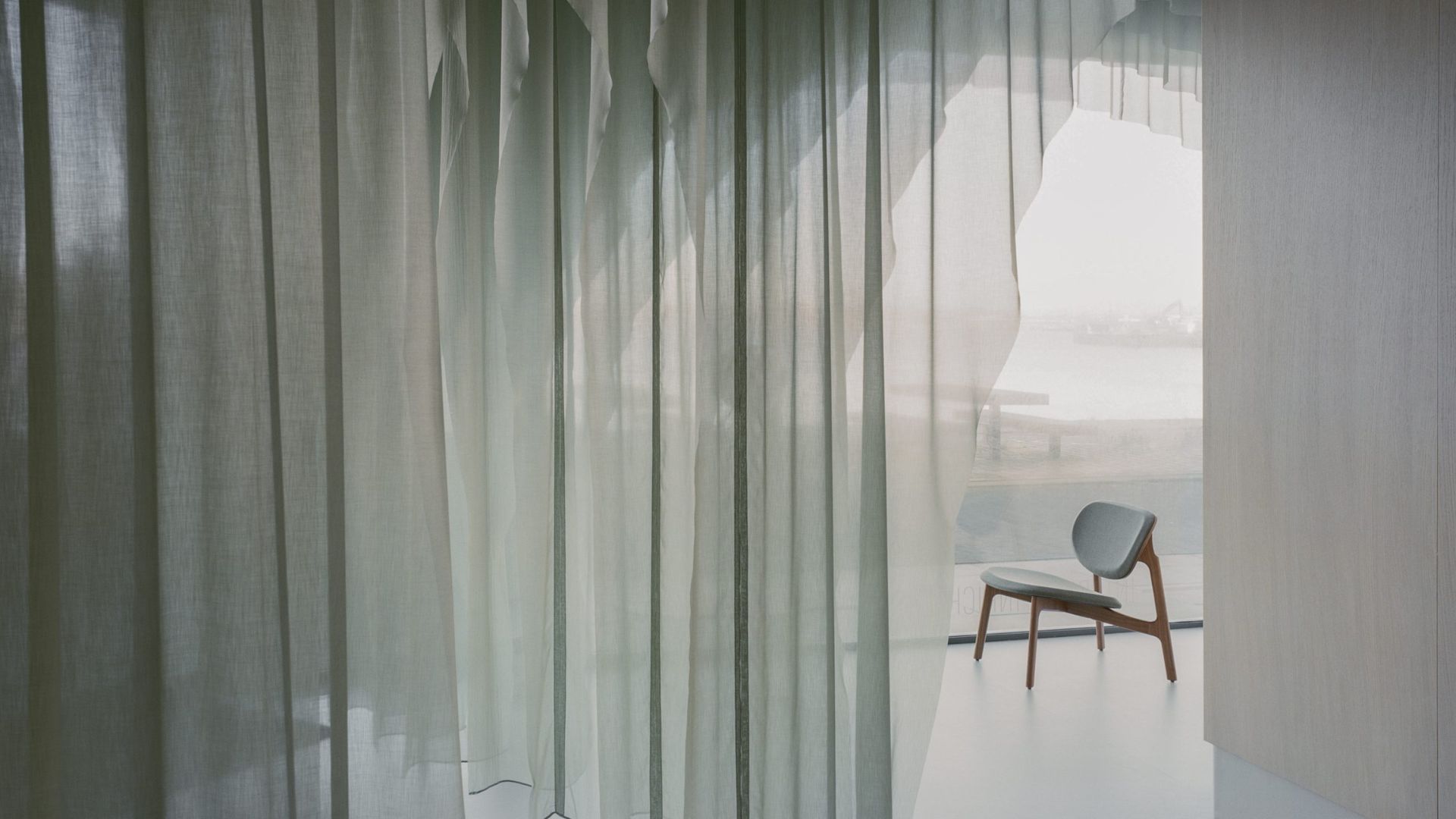A vibrant hub where architecture, nature and culture meet, emerging from the lake
In the heart of Foshan City, Guangdong, there is a breathtaking architectural masterpiece, the Nanhai Art Center, ready to redefine the urban landscape and captivate the imagination of all who encounter it.

The Nanhai Art Center, designed by the visionary minds at MAD Architects, emerges like a graceful ripple from the quiet and peaceful waters of its surroundings, symbolizing a harmonious fusion of culture, nature, and innovation.
Covering an impressive 59,445 square meters, the Nanhai Art Center stands as a testimony to the transformative power of architectural design. By incorporating three main elements – a Grand Theater, a Museum, and a Sports Center – this dynamic cultural hub transcends traditional notions of space and functionality, inviting visitors on a journey of exploration and discovery.

At its core, the Nanhai Art Center embodies a profound commitment to community engagement and cultural revival. Taking as a model the rich architectural heritage of Southern Guangdong, the design pays homage to the region’s communal spirit while embracing modernity. Recognizing the importance of communal gatherings in Southern Guangdong culture, MAD’s team underscores the need for ample communal spaces within contemporary cultural venues.
The Nanhai Art Center’s design prioritizes the creation of generous “grey spaces” to accommodate such activities, ensuring the continuation of the region’s vibrant lifestyle. Therefore MAD’s lead architect, Ma Yansong, affirms: “The large overhangs of traditional southern Guangdong architecture and the gray space that provides shade, rain, and ventilation are all sources of inspiration for the art center. The architectural space suitable for the natural climate and the application of new green technologies are trying to explore a model of contemporary Lingnan architecture”.

Indeed MAD’s founding partner’s vision is deeply rooted in a desire to infuse contemporary living with the timeless traditions and values of the past. He aims to create a space that resonates with both authenticity and vitality, and at the same time rejuvenate Nanhai’s traditional culture within a contemporary framework, drawing inspiration from the local festivities such as the lion dance or the dragon boat race.
Scheduled to start construction in 2024 and slated for completion by 2029, the Nanhai Art Center represents a bold leap forward in the evolution of urban waterfront experiences. The architectural ensemble, characterized by its undulating wave-like structures, is crowned by a floating sun canopy.

The center’s distinctive wave-like form serves as a dynamic public gateway to the waterfront, inviting residents and visitors alike to engage with the serene beauty of the surrounding landscape.
The centerpiece of the Nanhai Art Center, the Grand Theater, offers immersive spaces designed to accommodate various dynamic performing arts, conferences, and experiences. With a seating capacity of 1,500 in the main theater and 600 in the multi-purpose hall, the Grand Theater aims to provide an inclusive and versatile venue for cultural events.
The layout of the center, with the Grand Theater and Museum situated on one side forming a visual axis toward the lake, and the Sports Center on the other, offers a harmonious balance of cultural and recreational amenities.

Permeable facades and a landscape platform seamlessly integrate the built environment with the natural surroundings, creating an immersive atmosphere and an involving experience that celebrates the symbiotic relationship between architecture and nature. One of the most striking features of the Nanhai Art Center is its commitment to sustainability and environmental stewardship.
From the translucent white ETFE membrane structure roof to the incorporation of energy-efficient systems such as photovoltaic power generation and rainwater collection, every aspect of the design is meticulously crafted to minimize its environmental footprint and promote eco-friendly practices.

Perhaps the most compelling aspect of the Nanhai Art Center lies in its ability to transcend the boundaries of traditional architecture and inspire a sense of wonder and awe.
As visitors explore its winding corridors and its expansive public spaces, they are invited to immerse themselves in a world where creativity knows no bounds and imagination reigns supreme. In conclusion, the Nanhai Art Center stands as a shining example of the transformative power of architectural design.

Through its innovative approach to space, form, and function, it offers a glimpse into a future where culture, nature, and innovation converge to create a truly immersive and unforgettable experience.

















